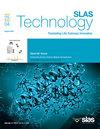Effect and toxicity of PF chemotherapy combined with radiotherapy in the treatment of advanced cervical cancer: Medical thermography test
IF 3.7
4区 医学
Q3 BIOCHEMICAL RESEARCH METHODS
引用次数: 0
Abstract
Cancer is one of the leading causes of death worldwide, and treatment options and prognosis for patients with advanced cancer are particularly challenging. PF chemotherapy regimen (the combination of cisplatin and 5-fluorouracil) has been widely used in the treatment of a variety of cancers, and radiotherapy as a local treatment can effectively control tumor growth. This is a prospective clinical trial in which patients were treated with PF chemotherapy combined with radiotherapy. Medical thermal imaging was performed on all patients before, during and after treatment. The examination process involves recording the patient's body surface temperature using a highly sensitive infrared camera and analyzing temperature changes in the tumor area and surrounding tissue. Clinical data on patients were also collected, including treatment response, quality of life scores, and reports of toxic and side effects. Preliminary results showed that PF chemotherapy combined with radiotherapy showed a positive effect in controlling tumor growth, and most patients experienced a reduction in tumor volume. Medical thermal image examination revealed significant changes in tumor area temperature during treatment, which correlated with tumor reactivity. In some cases, thermal imagery shows potential skin and mucosal damage in advance, suggesting the need for early intervention. Thermal imagery also helped assess the impact of treatment on patients' quality of life, such as pain and discomfort by looking at changes in the patient's body surface temperature distribution.
PF化疗联合放疗治疗晚期宫颈癌的疗效及毒性:医学热成像试验。
癌症是世界范围内导致死亡的主要原因之一,晚期癌症患者的治疗选择和预后尤其具有挑战性。PF化疗方案(顺铂联合5-氟尿嘧啶)已广泛应用于多种癌症的治疗,而放疗作为局部治疗可有效控制肿瘤生长。这是一项前瞻性临床试验,患者接受PF化疗联合放疗。所有患者在治疗前、治疗中、治疗后均行医学热成像检查。检查过程包括使用高灵敏度红外摄像机记录患者体表温度,并分析肿瘤区域和周围组织的温度变化。还收集了患者的临床数据,包括治疗反应、生活质量评分和毒副反应报告。初步结果显示,PF化疗联合放疗对控制肿瘤生长有积极作用,大多数患者肿瘤体积减小。医学热像检查显示治疗期间肿瘤区域温度有明显变化,与肿瘤反应性相关。在某些情况下,热成像可以提前显示潜在的皮肤和粘膜损伤,提示需要早期干预。热成像还有助于评估治疗对患者生活质量的影响,例如通过观察患者体表温度分布的变化来评估疼痛和不适。
本文章由计算机程序翻译,如有差异,请以英文原文为准。
求助全文
约1分钟内获得全文
求助全文
来源期刊

SLAS Technology
Computer Science-Computer Science Applications
CiteScore
6.30
自引率
7.40%
发文量
47
审稿时长
106 days
期刊介绍:
SLAS Technology emphasizes scientific and technical advances that enable and improve life sciences research and development; drug-delivery; diagnostics; biomedical and molecular imaging; and personalized and precision medicine. This includes high-throughput and other laboratory automation technologies; micro/nanotechnologies; analytical, separation and quantitative techniques; synthetic chemistry and biology; informatics (data analysis, statistics, bio, genomic and chemoinformatics); and more.
 求助内容:
求助内容: 应助结果提醒方式:
应助结果提醒方式:


